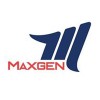Filter interviews by
mPHATEK Systems Interview Questions and Answers
11 Interview questions
OOPS concepts are fundamental principles in object-oriented programming that help in organizing and designing code efficiently.
Encapsulation: Bundling data and methods that operate on the data into a single unit. Example: a car object with properties like color and methods like start() and stop().
Inheritance: Allowing a class to inherit properties and behavior from another class. Example: a class Animal can inheri...
Normalization is the process of organizing data in a database to reduce redundancy and improve data integrity.
Normalization involves breaking down data into smaller, more manageable tables
It helps in reducing data redundancy by storing data in a structured way
Normalization ensures data integrity by avoiding update anomalies
There are different normal forms like 1NF, 2NF, 3NF, etc.
Example: In a database, instead of ...
Types of joins in SQL include inner join, outer join, left join, and right join.
Inner join: returns rows when there is a match in both tables
Outer join: returns all rows when there is a match in one of the tables
Left join: returns all rows from the left table and the matched rows from the right table
Right join: returns all rows from the right table and the matched rows from the left table
Delete removes rows from a table, truncate removes all rows from a table, drop removes a table from the database.
Delete is a DML command which removes specific rows from a table.
Truncate is a DDL command which removes all rows from a table but keeps the table structure.
Drop is a DDL command which removes an entire table from the database.
Delete can be rolled back, truncate cannot be rolled back, drop cannot be rol...
OpenAPI specification is a standard for defining RESTful APIs.
OpenAPI specification allows developers to describe APIs in a standardized format using YAML or JSON.
It includes information such as endpoints, parameters, request/response formats, authentication methods, etc.
Tools like Swagger UI can generate interactive API documentation based on OpenAPI specifications.
API contract defines the rules and requirements for interacting with an API.
API contract specifies the endpoints, methods, parameters, and data formats that can be used to access the API.
It also includes information on authentication, rate limits, error handling, and versioning.
Developers must adhere to the API contract to ensure proper communication and functionality.
Examples: RESTful APIs typically have a clear ...
Load balancing in Kubernetes is achieved using a service called Kubernetes Service.
Create a Kubernetes Service object with a type of 'LoadBalancer'
The Service will automatically create an external load balancer that will distribute traffic to the pods in the service
The load balancer will route traffic based on the service's selector
Rate limiting can be implemented using techniques like token bucket algorithm or sliding window algorithm.
Implement token bucket algorithm to limit the number of requests a user can make within a certain time frame.
Use sliding window algorithm to track the number of requests made in a specific time window and reject requests that exceed the limit.
Consider using libraries like Guava RateLimiter in Java for easy imp...
API versioning is a practice of managing different versions of an API to ensure compatibility and smooth transitions for users.
Use URL paths to differentiate between different versions of the API (e.g. /v1/resource vs /v2/resource)
Include version information in the request headers (e.g. Accept header)
Implement versioning through query parameters (e.g. /resource?version=1)
Use custom media types to specify API versi...
Joins are used to combine data from two or more tables in SQL.
Joins are used to retrieve data from multiple tables based on a related column between them.
There are different types of joins such as inner join, left join, right join, and full outer join.
Inner join returns only the matching rows from both tables, left join returns all rows from the left table and matching rows from the right table, right join returns...
mPHATEK Systems Interview Experiences
13 interviews found
(1 Question)
- Q1. Explain OOPS concepts with real time example
- Ans.
OOPS concepts are fundamental principles in object-oriented programming that help in organizing and designing code efficiently.
Encapsulation: Bundling data and methods that operate on the data into a single unit. Example: a car object with properties like color and methods like start() and stop().
Inheritance: Allowing a class to inherit properties and behavior from another class. Example: a class Animal can inherit fro...
(1 Question)
- Q1. Explain project in details
- Ans.
Developed a web-based project management tool for tracking tasks and deadlines.
Used HTML, CSS, and JavaScript for front-end development
Utilized Node.js and Express for back-end development
Implemented MongoDB for database management
Incorporated user authentication and authorization features
Integrated real-time updates using WebSockets
(1 Question)
- Q1. Family background , salary discussion
- Q1. Function, procedure, trigger, index
- Q2. Deployment process, security
I applied via Approached by Company and was interviewed in Apr 2024. There were 2 interview rounds.
(1 Question)
- Q1. - Profile - KRA - Campaign for CTO
(1 Question)
- Q1. - Profile - Work ethics
I applied via Naukri.com and was interviewed in Jan 2024. There was 1 interview round.
(5 Questions)
- Q1. What API contract
- Ans.
API contract defines the rules and requirements for interacting with an API.
API contract specifies the endpoints, methods, parameters, and data formats that can be used to access the API.
It also includes information on authentication, rate limits, error handling, and versioning.
Developers must adhere to the API contract to ensure proper communication and functionality.
Examples: RESTful APIs typically have a clear API c...
- Q2. What is OpenAPI specification
- Ans.
OpenAPI specification is a standard for defining RESTful APIs.
OpenAPI specification allows developers to describe APIs in a standardized format using YAML or JSON.
It includes information such as endpoints, parameters, request/response formats, authentication methods, etc.
Tools like Swagger UI can generate interactive API documentation based on OpenAPI specifications.
- Q3. How to do load balancing in Kubernetes
- Ans.
Load balancing in Kubernetes is achieved using a service called Kubernetes Service.
Create a Kubernetes Service object with a type of 'LoadBalancer'
The Service will automatically create an external load balancer that will distribute traffic to the pods in the service
The load balancer will route traffic based on the service's selector
- Q4. How to make rate limiting
- Ans.
Rate limiting can be implemented using techniques like token bucket algorithm or sliding window algorithm.
Implement token bucket algorithm to limit the number of requests a user can make within a certain time frame.
Use sliding window algorithm to track the number of requests made in a specific time window and reject requests that exceed the limit.
Consider using libraries like Guava RateLimiter in Java for easy implemen...
- Q5. Give example for API versioning
- Ans.
API versioning is a practice of managing different versions of an API to ensure compatibility and smooth transitions for users.
Use URL paths to differentiate between different versions of the API (e.g. /v1/resource vs /v2/resource)
Include version information in the request headers (e.g. Accept header)
Implement versioning through query parameters (e.g. /resource?version=1)
Use custom media types to specify API versions (...
Skills evaluated in this interview
I applied via Campus Placement and was interviewed in Oct 2023. There were 4 interview rounds.

Aptitude test was quite easy it has same question as in amcat exam
Its difficult round only few students get selected
(1 Question)
- Q1. Tell me about yourself, describe your memorial day?, are you a team player?
I applied via Referral and was interviewed before Jun 2023. There were 2 interview rounds.
(4 Questions)
- Q1. SQL aggregate function
- Q2. Difference between delete, truncate and drop
- Ans.
Delete removes rows from a table, truncate removes all rows from a table, drop removes a table from the database.
Delete is a DML command which removes specific rows from a table.
Truncate is a DDL command which removes all rows from a table but keeps the table structure.
Drop is a DDL command which removes an entire table from the database.
Delete can be rolled back, truncate cannot be rolled back, drop cannot be rolled b...
- Q3. What are types of joins and use of join with example
- Ans.
Types of joins in SQL include inner join, outer join, left join, and right join.
Inner join: returns rows when there is a match in both tables
Outer join: returns all rows when there is a match in one of the tables
Left join: returns all rows from the left table and the matched rows from the right table
Right join: returns all rows from the right table and the matched rows from the left table
- Q4. What is normalization
- Ans.
Normalization is the process of organizing data in a database to reduce redundancy and improve data integrity.
Normalization involves breaking down data into smaller, more manageable tables
It helps in reducing data redundancy by storing data in a structured way
Normalization ensures data integrity by avoiding update anomalies
There are different normal forms like 1NF, 2NF, 3NF, etc.
Example: In a database, instead of stori...
(2 Questions)
- Q1. Details about the company
- Q2. Salary expectations and other things
Interview Preparation Tips
Skills evaluated in this interview
I applied via Recruitment Consulltant and was interviewed in Jul 2022. There were 3 interview rounds.

(1 Question)
- Q1. Basic sql concept,difference between truncate& drop,define constraints & such examples with syntax,update funcation orally etc
(1 Question)
- Q1. Self intro,document verification etc
Interview Preparation Tips
(2 Questions)
- Q1. What js joins in structure query language ?
- Ans.
Joins are used to combine data from two or more tables in SQL.
Joins are used to retrieve data from multiple tables based on a related column between them.
There are different types of joins such as inner join, left join, right join, and full outer join.
Inner join returns only the matching rows from both tables, left join returns all rows from the left table and matching rows from the right table, right join returns all ...
- Q2. What is structured query language ?
(1 Question)
- Q1. Tell me something about yourself ?
Interview Preparation Tips
Skills evaluated in this interview
I applied via Referral and was interviewed in Apr 2022. There were 4 interview rounds.

General awareness
(1 Question)
- Q1. Why i need to hire, pros and cons blah blah
(1 Question)
- Q1. Java , selenium, testng questions
Interview Preparation Tips
I applied via Naukri.com and was interviewed in Sep 2021. There were 2 interview rounds.
(5 Questions)
- Q1. What are your salary expectations?
- Q2. Share details of your previous job.
- Q3. Why should we hire you?
- Q4. Why are you looking for a change?
- Q5. Tell me about yourself.
(1 Question)
- Q1. About Excel & SQL query.
Interview Preparation Tips
Top trending discussions






mPHATEK Systems Interview FAQs
The duration of mPHATEK Systems interview process can vary, but typically it takes about less than 2 weeks to complete.
Tell us how to improve this page.
mPHATEK Systems Interviews By Designations
- mPHATEK Systems Software Developer Interview Questions
- mPHATEK Systems Engineer Trainee Interview Questions
- mPHATEK Systems Junior Software Engineer Interview Questions
- mPHATEK Systems Software Engineer Interview Questions
- mPHATEK Systems Market Executive Interview Questions
- mPHATEK Systems SQL Database Administrator Interview Questions
- mPHATEK Systems Senior Java Developer Interview Questions
- mPHATEK Systems SQL Developer Interview Questions
- Show more
Interview Questions for Popular Designations
Overall Interview Experience Rating
based on 10 interview experiences
Difficulty level
Duration
Interview Questions from Similar Companies
mPHATEK Systems Reviews and Ratings
based on 118 reviews
Rating in categories
5-8 Yrs
Not Disclosed
4-6 Yrs
Not Disclosed
|
Software Developer
100
salaries
| ₹2.8 L/yr - ₹11.6 L/yr |
|
Software Engineer
76
salaries
| ₹1.9 L/yr - ₹7.6 L/yr |
|
Junior Software Engineer
55
salaries
| ₹1.8 L/yr - ₹4.6 L/yr |
|
Salesforce Developer
44
salaries
| ₹3.2 L/yr - ₹10.3 L/yr |
|
Technical Lead
41
salaries
| ₹23.9 L/yr - ₹35 L/yr |

Maxgen Technologies

JoulestoWatts Business Solutions

Value Point Systems

F1 Info Solutions and Services
- Home >
- Interviews >
- mPHATEK Systems Interview Questions

















